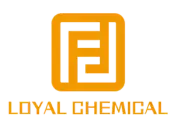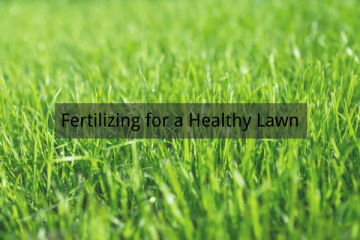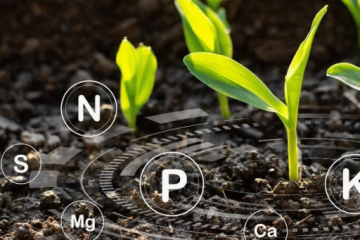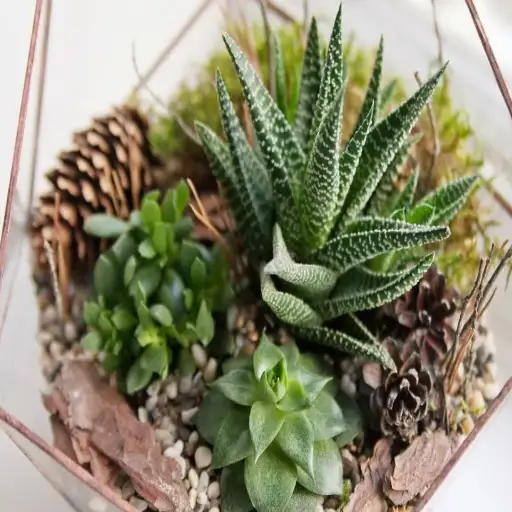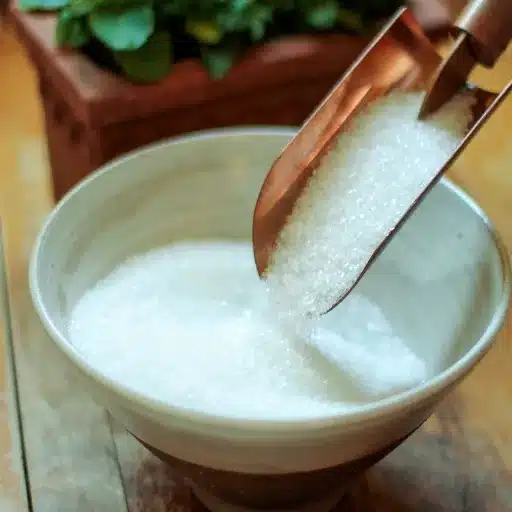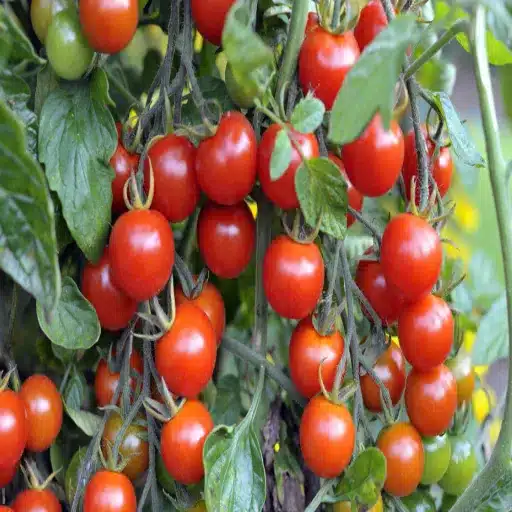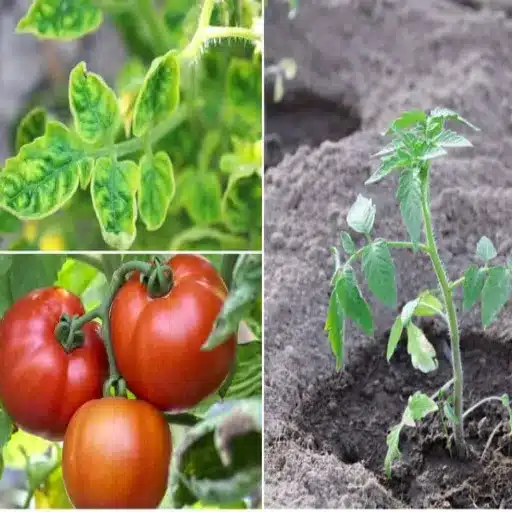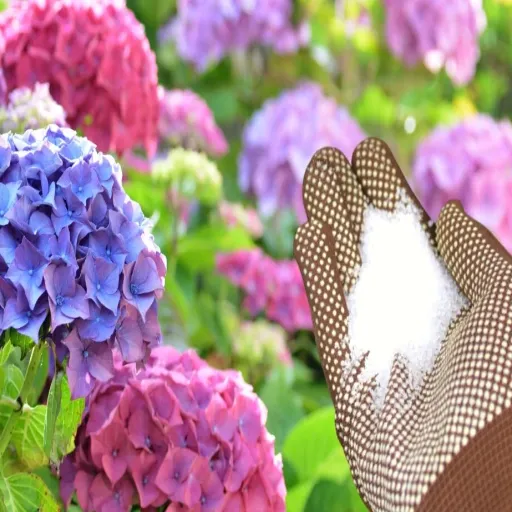Gardening enthusiasts and tomato growers alike are constantly searching for ways to optimize plant health and maximize yields. One surprisingly simple yet effective solution lies in the use of Epsom salt, a time-tested remedy for nutrient deficiencies and enhanced plant vitality. This guide dives deep into the science behind Epsom salt application in the garden, focusing on its role in promoting lush foliage, robust plant development, and tastier, more abundant tomato fruit production. Whether you’re a beginner or a seasoned gardener, this article will provide you with the precise knowledge and methods you need to unlock the full potential of Epsom salt for your plants.
How Much Epsom Salt Per Gallon of Water Is Safe for Different Plants?
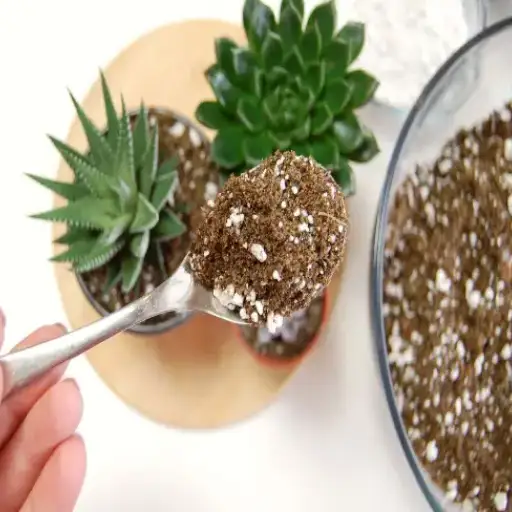
General Ratio: Tablespoon of Epsom Salt Per Gallon for Most Plants
A ratio that has been optimally studied and is efficacious for feeding most plants is the one that involves dissolving 1 tablespoon of Epsom salt in a gallon of water. This ratio is appropriate because it provides the correct magnesium and sulfate concentration for your plants without the danger of overapplication that could disrupt the nutrient balance.
For flowering plants like roses, application of this solution once every two to four weeks enhances blossom size, improves coloration of the blossoms, and also leads to improved floral pigmentation. Other vegetables like Tomatoes and Peppers also benefit from Magnesium supplementation and can use the same ratio. Other symptoms include interveinal chlorosis, which pairs deferentially yellowing of leaves with a sulfuric deficiency in magnesium.
Following these restricted guidelines ensures that you do not over-supply the crops, while supporting infusion of vital constituents, thereby augmenting their growth and improving crop yields over time.
Specific Measurements for Vegetables, Tomatoes, and Peppers
For general vegetables, apply a balanced fertilizer with a nitrogen-phosphorus-potassium (NPK) ratio of about 10-10-10 or 5-10-10, at a rate of 1 to 2 pounds per 100 square feet of the planting area. This enables even distribution of nutrients that promotes both vegetative and root growth. Depending on the crop, soil test results, and nutrient requirements, reapply the fertilizer every 4 to 6 weeks during the growing season.
As a heavy feeder, tomatoes require more attention and specific treatment for optimal growth. For best results, use fertilizer with lower nitrogen and higher phosphorus, such as 5-10-5 or 4-12-4. During the planting stage, apply 2 tablespoons of fertilizer at the base which helps stimulate root establishment. From the onset of the first fruit set, side dress at a rate of one tablespoon per plant every three weeks with care not to let the fertilizer touch the stem to avoid burn.
For peppers, an NPK ratio of 5-10-10 is also effective, with an initial application of 2 teaspoons per plant mixed into the soil at planting time. Side dressing of 1 tablespoon of fertilizer per plant every 4 weeks once pepper plants start flowering, will help sustain fruit production. For optimal levels of moisture to achieve uniform soil moisture levels helps prevent nutrient absorption issues, which leads to deficiency, such as calcium depletion, which then results in physiological disorders like blossom-end rot.
Every time steps for all applications are conducted, water the soil after fertilizing to increase nutrient uptake and decrease severing roots. Depending on the estimation of lacking vital nutrients or in excess surpluses, regular soil examination is suggested to precisely determine their application of fertilizer to achieve specific goals.
When and How to Apply Epsom Salt in Your Garden
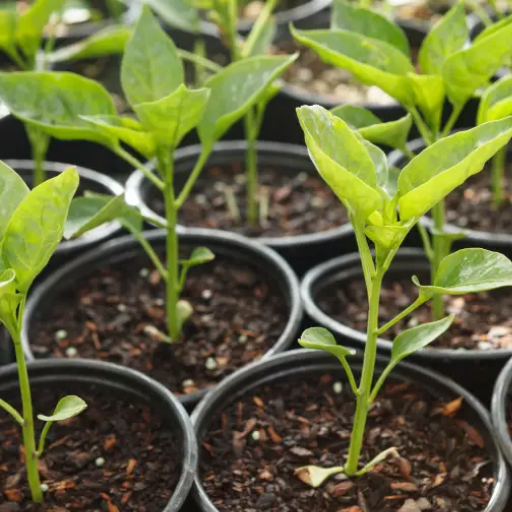
Creating and Using an Epsom Salt Foliar Spray
Creating an Epsom salt foliar spray helps in providing magnesium and sulfur is an effective way for delivering these nutrients, as they are readily absorbed through leaves. To prepare a basic foliar spray, one needs to dissolve 1 tablespoon of Epsom salt in 1 gallon of warm water. Mix properly to ensure that there is no clogging in your sprayer.
It is best to apply the spray early in the morning or late in the evening to avoid harsh sunlight that can cause leaf scorch. The spray should be directed towards the upper and lower sides of the leaves to ensure that they are thoroughly covered. The recommended optimal frequency is once every two weeks during the growing season for vegetables, flowers, and fruit-bearing plants. Care must be taken to not over apply since the addition of magnesium can be disruptive to the soil nutrient balance thereby affecting plant health.
That applying foliate sprays at certain stages of plant development, specifically during flowering and fruiting, increases yield and benefits plant health. It is still best to track plant response to avoid nutrient disorders due to unregulated application gap. These methods allow gardeners to reap maximum benefit from Epsom salt application while simultaneously optimizing plant health and development.
Adding Epsom Salt Directly to Soil Around the Base of Plants
It is very easy to improve nutrient uptake for a plant by this method. Applying Epsom salt directly, specifically around the stem of the plant with its roots, will help ensure its magnesium and sulfur composition is maximally absorbed through the roots, as sulfur and magnesium are its primary components. Studies also seem to correlate those nutrients with the production of chlorophyll, photosynthesis, plant strength, and overall well-being, which in turn require enzymes for activation.
One to two tablespoons of Epsom salt are recommended, depending on the species and the size of the plant. The area around the base should be marked for its application while ensuring that the Epsom salt contact with the stem itself, which could prove harmful or demanding to fortitude. Adding water after applying Epsom salt helps nourish the plant and also assists with magnesium and sulfur absorption, as it increases the likelihood of nutrient movement to the roots.
To best adjust the other underlying nutrients like calcium, potassium, or magnesium, existing balance levels for certain target nutrients should be tested periodically to maximize retention through targeted application. In turn, adding Epsom salt with some fertilization methods will vastly improve the nutritional balance over time.
Best Times During the Growing Season to Apply Epsom Salt
To enhance the health of plants and the efficiency of nutrient absorption, Epsom salt, with its magnesium sulfate content, needs to be used at particular intervals during the growing phase of the plant. Soils should be treated with Epsom salts towards the beginning of the growing period at the initial stages of soil prep. This allows for the magnesium and the sulfur to be present for the germination of seeds and root cap formation of the plant. Early application can be done through soil amendments as well as spraying diluted Epsom salt water directly onto the soil.
For cropping plants and for flowering plants, foliar feeding with Epsom salts can do an amazing job of rectifying these deficiencies and enabling easier nutrient absorption on leaves. During active flowering and vegetative growing stages, a mid season growth boost can fix nutritionally triggered rapid development demands.
To promote healthy production and prevent nutrient depletion in the soil towards the end of the growing season, it is useful to do a final supplementary application. With appropriate timing and concentrated treatment, nutrients and plant resilience for growth and seasonal yield are improved, making sure that the plant gets sufficient Epsom salt. Staying informed about the plants and the soil conditions enables better use of Epsom salts optimized for the needs during this period.
Does Using Epsom Salt Help Tomatoes and Pepper Plants?
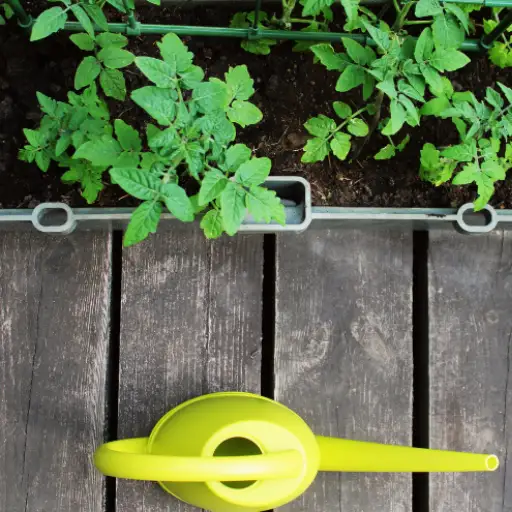
How Epsom Salt Affects Tomato Fruit Production and Bloom
The primary focus of Epsom’s salt usage in growing tomatoes is its magnesium sulfate component, which is crucial in the processes of photosynthesis and enzymatic activity. Magnesium aids in the formation of chlorophyll and, hence, assists the plants with using solar energy efficiently. In most soils, there is a significant amount of sulfate which Sulfate enables for a wide scale metabolic processes.
Research studies show that magnesium deficiency in tomato plants causes curling of leaves, underdevelopment dwarfed stature and reduced yield. These symptoms are usually present as a interveinal chlorosis, the tissue in between the leaf veins turns yellow while the veins are green. Mg deficiency is very easy to manage in Epsom salt and leads to proper flowering and fruit set and hence improved yield.
In addition, Epsom salt does affect the blooming and fruit development of the plant due to magnesium contribution as a macronutrient. Mg enables Strontium to make enough S and P, which increases the chances of flowering and fruit production. It should be noted, though, that too much Epsom salt application could be harmful because of a lack of sufficient nutrients soil for other crops.
The effectiveness of Epsom salt is likely impacted by the condition of the soil, the current level of magnesium, and the health status of the plant. Hence, conducting a soil test prior to application is advisable to check if supplementation with magnesium is required. Its effectiveness in increasing the levels of tomato blooms and fruit production may also be influenced by proper application techniques like soil drenching or foliar spraying.
Signs Your Pepper Plants Need Magnesium and Sulfur
Pepper plants show a variety of physiological and observable symptoms with the deficits of both magnesium and sulfur. Magnesium deficit usually manifests itself as interveinal chlorosis, with the veins remaining green, but the areas in between the veins becoming yellow. This may be most problematic with older leaves since magnesium, as a mobile nutrient, tends to be reallocated to newer growth. Stunted growth along with reduced fruit production is likely with prolonged shortage, as magnesium is crucial in chlorophyll synthesis and energy transfer within the plant.
On the contrary, sulfur shortage presents itself as a universal yellowing of younger leaves because sulfur, as a less mobile nutrient, has a primary deficiency impact on the new growth. Sulfur deficiency can lead to a decrease in Proteins, which results in weak stems and poorly developed flowers and fruits. Both these shortcomings can happen to soils with high leaching and low organic matter content, or are dependent on certain synthetic fertilizers, which tend not to supply a balanced nutrient profile.
Recommended soil testing and nutrient evaluation prevents most of these problems because it’s possible to apply the needed correction of fertilizers as Epsom salt (magnesium sulfate), ensuring maximum productivity while maintaining the health of the plant.
Common Mistakes When Using Epsom Salt in Gardening

Too Much Epsom Salt: Symptoms of Overuse in Garden Soil
Most of the time, using Epsom salt or magnesium sulfate caused the imbalance of soil chemistry, harming the plant’s growth as well as the soil’s health. Most Epsom salt overuse symptoms particularly come with the possibility of magnesium poisoning, which is the worst case scenario since it stops the plant from absorbing other important nutrients such as calcium and potassium. This lack of nutrient absorption leads to stunted growth, yellowing of leaves (which is known as chlorosis), and weak stems, especially in sensitive plants. In addition to that, having excess magnesium can change the pH of the soil, which increases or reduces its acidity boundaries, lessening the ratio of important micronutrients like iron and zinc.
The overuse of Epsom salt and magnesium sulfate can lead to another issue of fertilizer runoff and environmental contamination. Excessive sprinkling of Epsom salt on plants causes erosion of groundwater or surface waterways, particularly of consuming useful resources. This, in turn, has a large negative impact on water pollution and aquatic ecosystems. Moreover, the water containing a high salt solution within the soil can cause osmotic stress, leading to inefficient water absorption. This results in the leaves wilting or getting scorched as well as restricted growth, even when there is enough water supplied to the soil.
Lastly, habitual overuse of Epsom salt may harm the soil structure over time. High concentrations of dissolved salts tend to disrupt the soil aggregates, which adversely impact porosity and the soil’s ability to absorb water. Such compaction increases the likelihood of the soil becoming harder and negatively affects root growth. To avoid these kinds of problems, it is necessary to conduct soil analysis to ascertain the concentration of magnesium present before applying Epsom salt. Through careful, evidence-based methods aimed at maintaining a balanced nutrient profile, these harmful effects can be avoided while improving plant productivity and health.
Balancing Magnesium with Calcium and Potassium Nutrients
Keeping a perfect balance of magnesium, calcium, and potassium is crucial for soil fertility and plant growth. These three important nutrients interact in a soil and affect it’s cation exchange capacity (CEC), nutrients level, and even it’s structure. For example, magnesium can take the place of calcium and potassium ions causing nutrient imbalance which negatively affects the plant growth. On the other hand, too much calcium can stop magnesium from being absorbed leading to chlorosis and a lack of vigor of the plant.
To avoid these problems, a soil test helps in identifying the concentration and ratio along with their values as needed. Studies show that the ratio of cation saturation must be 65-75% calcium, 10-15% magnesium, and 2-5% potassium based on the type of soil and environment conditions. This ratio helps with soil structure, microbial life and enhances the soil water retention and drainage.
The nutrients are usually managed with specific amending requirements. For instance, both calcium and magnesium deficiency can be corrected using dolomitic lime. The same can be said about potassium sulfate and its usage for supplying potassium because it does not add magnesium oversaturation. Today’s farming methods increasingly incorporate analytical approaches, like advanced soil testing, to enhance cross-referenced farms through precision agriculture. Such strategies promote eco-friendly soil stewardship and help prevent excess application and soil pollution. With a comprehensive understanding of magnesium, calcium, and potassium, professional gardeners and farmers can cultivate high soil fertility and healthy plants for sustainable growth.
When Not to Use Epsom Salt in Your Garden
Although Epsom salt is on the cheaper end, it’s often touted for its magnesium and sulfate content that would potentially help some plants, but should be used carefully for the following cases:
- Soil Conditions Where Magnesium is High: Magnesium prevalent soil makes applying Epsom salt an unhelpful booster as it can cause an imbalance of nutrients and lead to deficiencies like Calcium and Potassium. Plant magnesium is known to interfere with nutrient uptake, which in turn deteriorates the plant’s health. One must always perform comprehensive soil testing before deciding on its application and determine if adding magnesium is indeed needed.
- Sandy or Easily Drained Soil: These types of soil are often found without sand and tend to lose nutrients, including magnesium, further depleting from the Epsom salt. In most conditions like these, these cannot be useful to plants in the long run, making frequent application deplete groundwater and causing environmental harm.
- Plants That Epsom Salt Isn’t Friendly With: Certain species of plants are bound to suffer and potentially use too much sulfate levels, which makes overusing epsom salt lead to toxicity, shown in yellow stunted foliage. Like with other measures, knowing about specific plant needs and amendments is critical for estimating fertilizer to avoid overage.
- Non-Magnesium Deficiency Issues: Issues like stunted plant growth and yellowing leaves are observable problems that don’t always relate to magnesium deficiency. Epsom salt’s use in these cases will always provide the wrong solution, which may be caused by alien pests, wrong watering techniques, or unbalanced pH levels.
- Absence of Professional Help: Giving a blanket recommendation to use Epsom salt turns out to be detrimental by harming a given lot’s soil health over time.
Farmers and gardeners should emphasize these limitations in order of priority as they cut off inappropriate use of Epsom salts and consider evidence based aimed approaches prioritizing ecosystem health.
Can Epsom Salt Help with Houseplants and Seed Germination?
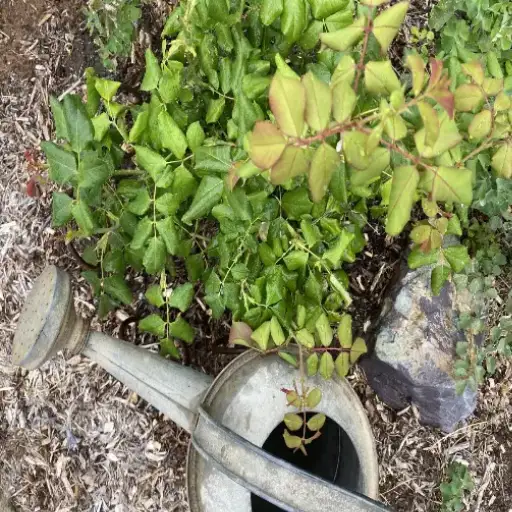
Diluting Epsom Salt for Indoor Houseplant Applications
When preparing home solutions, especially Epsom salt solutions for watering houseplants, a certain ratio must be followed. This procedure helps avoid any errors in calculating salt or nutrient concentrations. This helps provide the plant with magnesium and sulfur, both essential for photosynthesis and the health of the silicates, which are fundamental to the well-being of the plant.
Depending on the plant type, the solution can be best applied to the soil by direct application or as a foliar spray. To reduce the risk of harm from sunlight, the application is best performed early in the morning. This applies to summer afternoons as well. With consistent application, the goal of treating the plant on a monthly to bi-monthly basis can be reached, though the ideal ratio depends on the growth stage and type of the plant.
Research has demonstrated that Epsom salts aid in the healthy development of leaves and flowers but only performs well with certain types of soils. It is wise to determine magnesium content of soil before adding Epsom salts to prevent magnesium antagonism with potassium and calcium absorption. A sensible use of Epsom salt on indoor plants wond need to be safe guarded by using a low concentration solution.
How Epsom Salt Helps with Chlorophyll Production and Yellow Foliage
Plants use Epsom salt (MgSO₄) for chlorophyll production, which is critical for photosynthesis because a magnesium-containing chlorophyll captures sunlight. Additionally, magnesium is fundamental in the production of chlorophyll in plants. Without magnesium, plants would struggle with chlorophyll production, and as a result, would most likely suffer chlorosis or yellowing of leaves.
Distributing magnesium salts through soil or foliar spraying solves the magnesium deficit. According to different studies, foliar application is a good way of supplying nutrients, especially when soils are not biologically active. For example, the case of bound cobalt in alkaline soils is removable only in the case of magnesium bound. Keeping magnesium at the peripheral range where the presence doesn’t conflict with other nutrients in the soil fosters a situation where starvation permeates the soil without overabundance.
Sulfur from magnesium is key in maintaining the internal defenses, aiding construction, and even supporting the muscles of the plant. This explains yellowing leaves, increased uncontrollably green plants, which worked to counter the deficit, while suppressing excessive growth, hence outlining adjustments for every treated plant. To restore and provide relief, experts recommend conducting a soil test before treatment.
References
Frequently Asked Questions (FAQs)
Q: How much Epsom salt per gallon should a gardener use for general plant health?
A: For general plant health, dissolve 1 tablespoon of Epsom salt per gallon of water. This solution can be applied monthly as a foliar spray or soil drench. This ratio provides sufficient magnesium levels without risking the buildup of minerals in the soil. For an extra boost during the growing season, you can safely increase to 2 tablespoons per gallon, especially for magnesium-loving plants like peppers and roses.
Q: What is the recommended Epsom salt dosage for tomatoes?
A: For tomatoes, add one tablespoon of Epsom salt per gallon of water and apply every two weeks. Alternatively, you can add 1 tablespoon directly to the planting hole when transplanting seedlings. For established tomato plants, sprinkle 1 tablespoon around the base of each plant monthly and water thoroughly. This helps strengthen cell walls, resulting in healthier plants and improved fruit production.
Q: How should I apply Epsom salt to rose bushes?
A: For each rose bush, apply ½ cup of Epsom salt around the base in early spring before new growth appears, and again after the first bloom. Alternatively, dissolve 1 tablespoon per gallon of water and apply with a sprayer or watering can every 4-6 weeks during the growing season. This promotes greener foliage, more abundant blooms, and improved longevity of the plants by strengthening cell walls.
Q: Can I use Epsom salt when planting seedlings?
A: Yes, you can add 1 tablespoon of Epsom salt to the hole when planting seedlings, especially for magnesium-loving plants like tomatoes, peppers, and roses. Mix it well with the soil at the bottom of the hole before placing the seedling. This helps prevent transplant shock and promotes stronger root development. For more delicate seedlings, use ½ tablespoon per planting hole to avoid overwhelming young plants.
Q: What’s the best way to use Epsom salt as a foliar spray?
A: To create an effective foliar spray, dissolve 1 tablespoon of Epsom salt per gallon of untreated water. Apply this solution to plant leaves using a fine mist sprayer every 2-4 weeks during the growing season. For best results, spray early in the morning when temperatures are cool. This method allows plants to absorb magnesium directly through their leaves, resulting in lusher, greener foliage and improved overall plant health.
Q: How does Epsom salt benefit vegetable gardens, and what’s the proper application rate?
A: Epsom salt benefits vegetable gardens by providing magnesium, which works with phosphorus and potassium to strengthen plant cell walls and improve nutrient uptake. For most vegetables, apply 1 cup per 100 square feet of garden area, gently working it into the soil before planting. During the growing season, you can supplement with a monthly application of 1 tablespoon per gallon of water as a soil drench around established plants.
Q: Can too much Epsom salt harm my plants?
A: Yes, excessive Epsom salt can harm plants by causing magnesium buildup in the soil, which can interfere with calcium uptake and create nutrient imbalances. Never exceed 1 tablespoon per gallon for regular applications or 1 cup per 100 square feet when amending soil. If you notice leaf yellowing or browning after application, reduce the frequency. In areas with naturally high magnesium levels, consider soil testing before applying Epsom salt regularly.
Q: How do Epsom salt applications differ for container plants versus garden beds?
A: For container plants, use a more diluted solution of 1 teaspoon of Epsom salt per gallon of water every 4-6 weeks, as container soil has limited volume and can experience mineral buildup more quickly. For garden beds, you can use the standard 1 tablespoon per gallon or apply 1 cup per 100 square feet of garden area twice per growing season. Container plants may also benefit from a soak in an Epsom salt solution (1 tablespoon per gallon) monthly to ensure thorough root contact.
Q: Should I use Epsom salt differently for indoor plants versus outdoor plants?
A: Yes, indoor plants typically need less Epsom salt. Use ½ teaspoon per gallon of water monthly for most houseplants, while ferns and other magnesium-loving indoor plants can receive 1 teaspoon per gallon. For outdoor plants, the standard 1 tablespoon per gallon applied every 2-4 weeks is appropriate. Indoor plants also benefit from more diluted applications since they grow more slowly and have limited soil volume compared to garden plants.
Q: Can Epsom salt replace other fertilizers in my garden?
A: No, Epsom salt cannot replace complete fertilizers as it only provides magnesium and sulfur. Plants need a range of nutrients, including nitrogen, phosphorus, and potassium, for proper growth. Use Epsom salt as a supplement to a balanced fertilization program. If your soil is magnesium-deficient, you might consider dolomite lime as an alternative, which provides both magnesium and calcium for long-term soil improvement, while Epsom salt offers a quick, water-soluble magnesium source for immediate plant needs.
